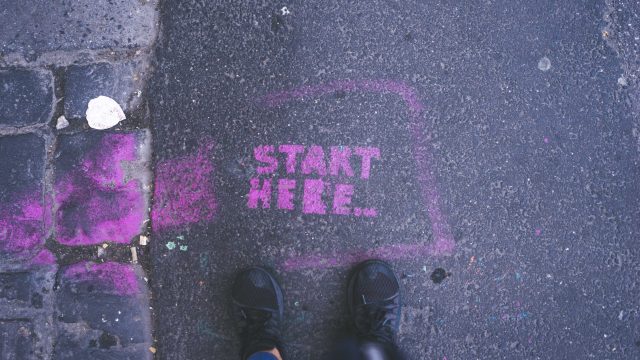Amazon IP infringement can be daunting for sellers – not only do you potentially have to dodge unscrupulous sellers making frivolous IP claims for financial gain, you also have to deal with the potential of stepping on someone else’s toes and landing yourself in hot water. In this article we’re going to give you the full story on Amazon IP complaints – what they are, where (and who) they come from and exactly how you as an Amazon FBA seller should deal with them.

Note – nothing in this article constitutes legal advice, and SourceMogul isn’t authorised to give you legal advice. This article is meant to give you guidance and information in the event you experience an IP issue on Amazon – but it doesn’t replace the need to consult with a lawyer.
What is an Amazon IP complaint?
An IP (intellectual property) complaint is where the rights owner (or someone representing the rights owner – most commonly, their lawyer) makes a claim that a particular product or listing infringes on their intellectual property rights. This can include anything from trademarks, images, copyrights, patents or anything else that could reasonably be considered someone else’s intellectual property.
There’s a few ways that someone can make an IP complaint. They can do it manually – and there’s a specific rights owner complaints form that the complainant can fill out and provide details about the (alleged) infringement alongside relevant supporting evidence. Brand owners can also do this through the brand registry, and it’s actually a lot easier to do it this way as the brand registry allows brand owners to proactively search for potential rights violations. However, many IP complaints are actually completely automated – and Amazon has its own set of algorithms and tools that allow it to spot potential rights violations on behalf of rights owners.
An IP complaint is not something that should be taken lightly – particularly as an FBA seller, since you could end up with your listings taken down, and even if you can’t sell anything, you’re still going to be charged for storing your items in Amazon’s warehouses. There’s also a slightly more sinister side to this, and it involves unscrupulous sellers making false IP complaints to try to get other people’s listings taken down. This is why when you get an IP complaint, you need to take it seriously, but you also need to work out whether it’s actually genuine or someone with an ulterior motive trying to get your listings removed.
Where do Amazon IP complaints originate from?
Competitive tactics from unscrupulous sellers
Continuing with this topic, it’s unfortunately become quite common where some sellers file unfounded IP complaints against other sellers to try and get their listings taken down. Amazon takes a “shoot first, ask questions later” approach to IP complaints so even if the claim is completely baseless and is eventually proved as such, it’s likely that the seller who was the target of the complaint will still suffer financial loss by way of having their listings removed temporarily or their account suspended.
Some sellers have been known to go about this in some really quite inventive ways – for example, claiming to represent a genuine brand as their legal counsel (which, by the way, is highly illegal), making up fake brands and then claiming that legitimate products are infringing on their copyright, or simply by misinterpreting information in a genuine listing and then exaggerating similarities to claim that there is an infringement – for example, seller B complains that seller A is selling a blue garden hose and it infringes on the copyright of the similar blue garden hose that seller B is selling – even though it’s a completely different brand and model.
To combat this, Amazon has started to require more substantial proof from people filing IP complaints that they are genuinely acting on behalf of the copyright holder, and has also introduced penalties for those making unfounded copyright claims. They haven’t stamped this practice out completely, however, and it’s unfortunately something that a lot of sellers have to deal with.
Genuine misunderstandings
A misunderstanding over an IP issue may occur if, for example, the complainant genuinely thinks that their copyright has been infringed when actually it hasn’t. A good example of this is where packaging might be quite similar, or where branding might be hinted at but not explicitly mentioned leading to confusion. Unfortunately even though the intent might not be malicious behind these types of complaints, it’s still possible that listings will be removed until the accused seller can prove that no infringement has taken place.
As with all other cases, documentation is key, and this is something we’ll go into in a bit more detail later on.
Trigger-happy automated tools
Now, we obviously don’t know the ins and outs of exactly how Amazon’s IP infringement algorithms work, but we do know that Amazon as well as other larger corporations and IP lawyers use automated systems to review the Amazon marketplace to identify potential infringements of their copyright. Often these tools are very effective and allow brands to police the use of their IP much more efficiently than if they were trying to do this manually, but like all cases of automation, there’s the possibility that sometimes the algorithm can get it wrong.
One of the main things these algorithms look for is broad keyword matches. Going back to our blue garden hose example, if you’re selling a counterfeit version of a popular blue garden hose brand called “X-Hose” and you market your product as “X-Hose alternative” or “Similar to X-Hose” you can expect that one of these algorithms will find you and shut your listing down. Another thing to consider is that these algorithms also use image recognition – so even if your product isn’t infringing on anyone else’s copyright, you might find that if you have images that are in any way similar, an algorithm might trigger a complaint made to you.
Generally in cases where the algorithm has got it a bit wrong, you can resolve the situation quickly by engaging with the complainant and providing the relevant documentation to prove that you’re actually not infringing on their copyright.
Actual cases of IP infringement
It would be remiss of us not to point out that actual cases of IP infringement are by far the most likely reason why you might have received an IP complaint – even if you didn’t intend to infringe on anyone’s copyright. For example – if you buy a copy of an item and try to sell it as the genuine thing, using the brand’s genuine photos and brand marks, it’s only a matter of time before the IP owner notices that what you’re doing isn’t quite right and makes a complaint against you.
If you genuinely believe you haven’t infringed on anyone’s copyright, you might want to look into fighting an Amazon IP complaint. However, if you have stolen someone else’s IP which includes their images, brand marks, patents, copyrights, etc – then you should remove the offending material or risk getting your Amazon account suspended.
What happens following an IP complaint?
As we’ve mentioned, Amazon acts primarily in the interest of brands in the case of IP complaints and not in the interest of sellers. As such, they will probably (but not definitely) at a minimum suspend the listing in question and send you a notification through Seller Central to tell you that a complaint has been made. This will include the specific listing, the exact IP that the complainant is claiming has been infringed and the complainant’s details. This is done entirely at the word of the complainant (providing they have provided sufficient evidence), because Amazon does not want the legal liability of potentially continuing to host copyrighted material following a complaint.
In more serious cases, Amazon may even withhold funds and conduct a further investigation into your affairs which could lead to account suspension or banning.
It should be mentioned that there’s no specific rule on the number of IP complaints you’re allowed to get before Amazon suspends your account – it all depends on the nature of the complaints, how serious they are and how quickly you resolve them. Amazon might be a bit more forgiving to you if you’re only being accused of using someone’s images and you resolve the complaint within a couple of days – but if you’re accused of major copyright infringement and you don’t engage with the complainant, expect to be treated more harshly, which will probably eventually lead to account suspension.
How to respond when you get an IP complaint
Receiving an IP complaint can be a very stressful situation – not only because of the financial aspects but also because you’ve also potentially experienced reputational damage or even had your Amazon account suspended. In order to help you, we’ve prepared a step-by-step guide to resolving an IP complaint on Amazon.
We’re assuming here that the complaint is not genuine and you believe you really do have the right to sell the product on Amazon, or use the images you’ve used, or whatever the complaint says. If you know you’ve infringed on someone’s copyright, however, you can follow these steps but you’ll likely get nowhere.
1. Document absolutely everything
Firstly – it’s normal to respond emotionally to an IP complaint. In order for an appeal to be successful, you need to keep emotions out of this – even if you think the complaint is just a misunderstanding, or if you think the complaint is malicious. Don’t react impulsively – keep a level head and deal with the situation rationally.
You must read through the complaint very carefully in full to make sure you fully understand it. Ensure you know exactly what listing is affected and what part of it has allegedly infringed on the complainant’s copyright.
Use the first few hours to gather as much information as you can, including pictures of what your listing looked like before the complaint (if you have them) as well as any and all interactions or notices you’ve had relating to the complaint. Make sure you’ve got all your product details to hand too, as if your listing has just been altered, this can be really helpful in getting your initial listing fully reinstated.
2. Contact the complainant
This is worthwhile doing in many cases, as it could even clear up the issue before you need to lodge a formal appeal. Contacting the complainant directly is an attempt to resolve the issue outside Amazon’s formal processes, and it can be helpful in ensuring quick reinstatement of your listing if there’s been a mistake on the complainant’s side. If you get this step right, you can stop the complaint going any further and could even lead to the seller retracting the complaint.
If you think the complaint is blatantly malicious or fraudulent, for example if someone has made up a fake brand that you can’t find any information on, or you think someone is pretending to represent a genuine brand, you may want to consider whether this step is necessary. However, we’d argue that it’s always worth reaching out – if nothing else, because you can show Amazon that you acknowledged the issue and tried to resolve it in a timely manner.
Also – if you’ve read the complaint and you concede you have actually violated the complainant’s copyright, providing evidence of removal of any infringing material might just be enough to stop the complaint going any further, and if the complainant is reasonable they might just drop the complaint providing they’re satisfied any IP you’ve used has been removed from your listing.
3. Gather up all your evidence
If the complainant is being uncooperative or you just aren’t getting anywhere by directly talking to them, you will need to prepare to submit a formal appeal. In order to do this you’ll need appropriate evidence – it isn’t enough just to explain to Amazon why you think the complaint is invalid. What evidence you’ll require is largely dependent on the type of complaint, so we’ve provided a run-down of some of the more common types of IP complaint on Amazon and what evidence you might need to support an appeal.
Trademark infringement
Provide invoices and receipts to prove you’ve purchased genuine products from genuine suppliers. Usually, if you’re doing online arbitrage and Amazon asks you for supplier invoices, they won’t accept receipts from retailers. However, in this case, it will support your claim that you’re actually selling genuine merchandise if you did source it from a retailer, because the retailer would only ever be selling genuine merchandise.
If you have licensing agreements with the brand, make sure you provide these also as proof that you can use the brand’s name. Any relevant product photos or supplier information will also help your case.
Copyright infringement
Provide details of licensing agreements that allow you to use the copyrighted material in question, such as images or videos. If your content is original (for example, your descriptions were written by you and weren’t taken from the manufacturer, or the photos are ones that you took yourself) then provide proof of this. You can also provide your product listing to prove that you’ve used any copyrighted material in line with what you’re allowed to do.
Patent infringement
Again – purchase invoices or receipts are a must here. Any product design details such as blueprints or prototypes will help your case to prove that you’re selling an original product and not the patented product. Also – if you have licensing agreements to sell a product that is patented, provide these too.
More general evidence you should provide in every IP complaint appeal
Provide any historical communication data such as emails to suppliers, brand owners or anyone responsible for licensing. Provide any previous sales data, particularly if you’ve been selling the product for a long time without any problems. You should also provide any feedback or reviews if you have them, as well as detailed examples of your product listings including any photos or descriptions.
The aim of doing this is to prove to Amazon (not the complainant) that you’ve either not infringed on the complainant’s copyright, or if you have, you’ve taken steps (or are willing to take steps) to rectify the issue if it’s a genuine misunderstanding.
Don’t be tempted to fabricate evidence or lodge an appeal if you have knowingly infringed upon someone else’s copyright – you’re just wasting everyone’s time.
4. Prepare and submit your appeal to Amazon
This will involve writing up a plan of action which details how you intend to resolve the complaint. If you feel you’ve not infringed on the complainant’s copyright, you should still do this, but make sure you explain very clearly to Amazon why you believe your listing doesn’t represent any type of copyright infringement.
Your plan of action needs to be concise and clear – as this will be read by a human who probably deals with hundreds of cases every day, they need to be able to pick out the salient facts very quickly.
Start by explaining who you are and what the issue is. Clearly state the ASINs involved. Describe why you think the issue occurred – for example, did you misunderstand that you weren’t allowed to use a particular image? Then write out your corrective measures – if you think you haven’t made any kind of IP infringement, you can leave this out. Finish up your appeal by requesting a reconsideration or asking Amazon to dismiss the complaint (if you do this, you should have explained very clearly why in the letter – don’t just ask them to dismiss a complaint that you haven’t fully debunked.)
Now you need to lodge the appeal with Amazon. Go to Seller Central, and go to Performance > Performance Notifications. Find the notification about the IP complaint, click “appeal” and go through the prompts to submit your plan of action.
You absolutely must also submit any supporting documentation at this stage and make reference to it in your plan of action – i.e. “in order to support this claim, I have included the following documents x, y and z” and make sure you fully explain how and why each document proves what you are claiming in your letter of appeal.
5. Wait for a decision
After you submit your appeal you will have to wait for a response – which will usually come within a few days. There are three possible outcomes to your appeal:
Approved – your listing or account will be reinstated and Amazon will inform you of such.
Additional information required – Amazon has not been able to make a decision based on the information you gave and requires further information to proceed. They will not tell you exactly which documents they require – they will only tell you specifically what it is they need proof of. It’s down to you to find the documents that satisfy their requirements.
Denial – Amazon has rejected your appeal and has ruled that the complaint was valid. You are given the option to re-appeal – but don’t just keep doing this over and over, hoping to get another case handler. Reassess your plan of action – and if you are continually getting denied, it might be time to consult with a lawyer.
6. If necessary – consult a specialist lawyer
At this stage, if you’ve been denied at least once, you might want to consider consulting a lawyer with experience in resolving Amazon IP disputes. A lawyer will be able to give you greater clarification on exactly why the complaint has been made and will also be able to guide you on submitting the appeal. If in the most serious cases Amazon won’t reinstate your listing but you still believe the complaint is invalid, a lawyer will be able to help you mount a legal case against the complainant – and this is particularly relevant if you are receiving multiple false or malicious IP claims against you.
You must do a cost/benefit analysis before engaging a lawyer – because lawyers are very expensive and there’s no guarantee that just by engaging a lawyer, you’ll win your case.
Frequently asked questions about Amazon IP complaints
How does Amazon determine whether an IP complaint is valid?
Amazon has a legal obligation to act if they suspect that copyright infringement is taking place on their platform. They generally don’t make a decision on the validity of an IP complaint before the seller has submitted their appeal – unless perhaps if the complaint is blatantly false or malicious. Amazon usually will only determine whether the complaint is valid after the seller submits an appeal – where they’ll look at the original complaint and the seller’s plan of action and then make a decision.
Unfortunately this does allow some unscrupulous sellers to cause financial harm to other sellers, as they can quite easily shut down listings almost with impunity.
Can I relist a product after I’ve had my appeal approved?
Yes – but make sure you keep all the documentation you used to win your appeal just in case an overzealous bot or another entity or law firm decides to raise the same complaint against you in future.
Does an IP complaint mean I’m being sued?
No. An IP complaint is a precursor to legal action but does not represent legal action – it’s a mechanism by which Amazon can resolve complaints internally without having to go to court. If someone wanted to sue you over copyright infringement they wouldn’t need to go through Amazon’s systems – they could just sue you (although going through Amazon’s process is likely to be a lot quicker and cheaper to get a potentially infringing listing taken down.)
Do other platforms have similar complaint mechanisms?
Yes – eBay has the VeRO (Verified Rights Owner) programme which operates in a very similar way to Amazon IP complaints. Etsy also has the Intellectual Property Policy which again, allows copyright owners to remove listings if they feel their copyright is being infringed. It’s very difficult to get away with copyright infringement on any platform, as they all have automated systems designed to root out and do away with sellers who commit intellectual property fraud.
Can I still get IP complaints even if I try to sell genuine products?
Yes – for example, if you’re trying to sell a product in a region where it was not intended to be sold, or if the brand has specific authorised seller agreements. A good example of this is LEGO – if you bought a LEGO product at a discount from Walmart and tried to sell it on Amazon you may find that you’re hit with IP complaints because even though the product is genuine, you don’t have the rights to sell it. Always make sure you have the correct licensing agreements and rights to sell the products you’re sourcing.
More strategy
-

6 steps to becoming an Amazon seller. No experience needed.
Becoming a successful Amazon seller is easy - the Amazon brand and logo represents…
-

Top tips for success from a new Amazon seller
We've compiled a list of the top tips for new sellers, gathered from a…
-

How to get ungated on Amazon – your guide to Amazon restricted categories
If you’re looking to expand your online arbitrage business, you might find yourself tempted…
-

How to prepare for Amazon Q4 trading
Every year the holiday season seems to come around a little earlier. As an…




